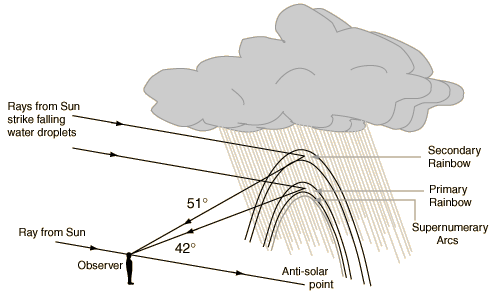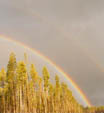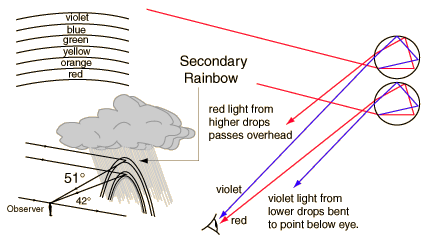Primary Rainbow
The primary rainbow forms between about 40° and 42° from the antisolar
point. The light path involves refraction and a single reflection inside the water droplet. If the drops are large, 1 millimeter or more in diameter, red,
green, and violet are bright but there is little blue. As the droplets get smaller, red weakens. In fine mist, all colors except violet may disappear. Even finer fog droplets, smaller than 0.05 mm, produce the white rainbow or fog bow. The secondary rainbow involves two reflections inside the falling droplets.

Rainbows are not seen in midday since the whole 42° circle is below the horizon at most latitudes. So rainbows tend to be seen most in the later afternoon when a thundershower has passed and the sun from the west is illuminating the receding edge of an eastwardly moving raincloud. It is possible to see the entire circle of the rainbow from an airplane since there can be falling droplets both above and below you.
|
Index
Rainbow concepts
Atmospheric optics concepts
References
Greenler
Schaaf |



